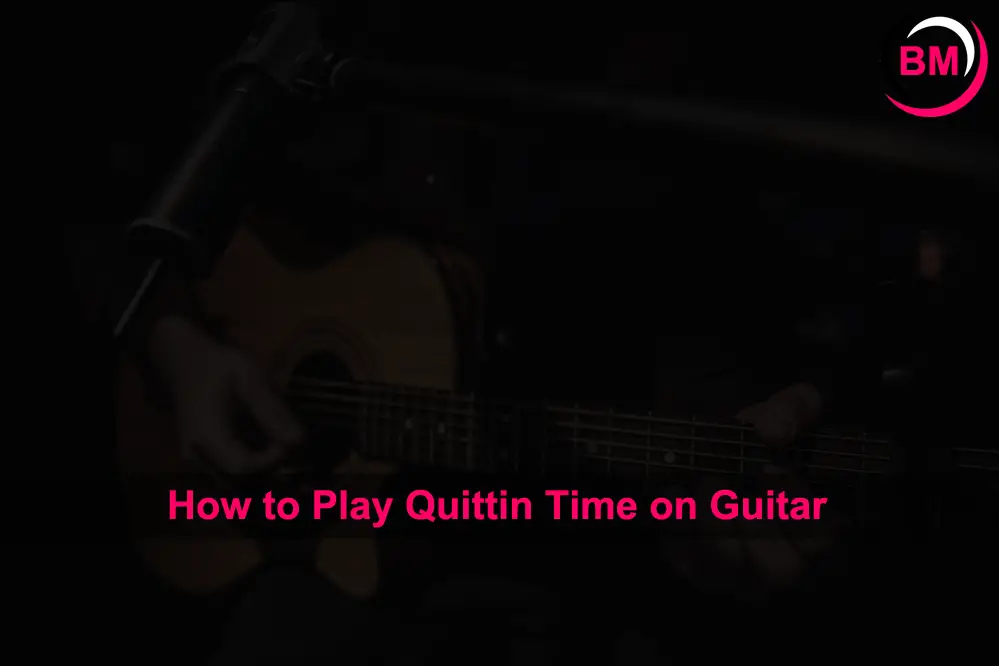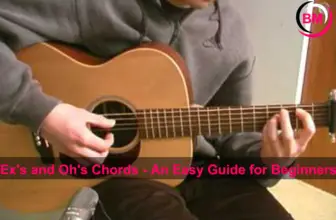
Do you want to know how to play Quittin Time on guitar? Are you a guitarist looking for a new challenge? Look no further than Quittin Time, the classic blues number by Robert Johnson.
Countless artists have covered this classic tune over the years; now it’s your turn! In this blog post, we’ll walk you through all the chords and licks you need to know to play this timeless blues classic.
So grab your guitar, and let’s get started!
How to Play Quittin Time on Guitar
Chords You Need To Know
The song is played in standard tuning with a 12-bar blues progression. The chords used in this song are A7, D7, E7, and B7. Let’s break down each chord one at a time so you can learn them quickly and easily.
A7 is an open chord that consists of the notes A (fifth string), C# (second string), E (first string), and G (fourth string).
To play the D7 chord, place your index finger on the second fret of the fourth string, then add your middle finger to the third fret of the first string. Finally, place your ring finger on the third fret of the second string.
This should give you all four notes needed for a D7 chord – D (third string), F# (fourth string), A (fifth string), and C# (second string). For E7, use your index finger to barre across strings 5-1 at fret 7.
Then add your ring finger to fret 9 on the fourth string and your ring finger to fret 8 on strings 3 and 2. The B7 chord is similar to E7 but uses fingers 8-5 at fret ten instead of 9-5 at fret 7.
Once you have these chords down, it’s time to practice them together to create our 12-bar progression – A7 | D7 | E7 | A7 | D7 | E7 | B7| A7| D7| E7| B| A||
Playing The Licks
Now that we’ve got our chords down let’s continue playing some lead licks over this progression. We’ll start with basic rhythm guitar before moving on to single-note licks.
- For our rhythm guitar part, we will use power chords consisting of root notes played on strings 6 & 5 followed by a quick hammer-on/pull-off lick with our pinky finger on strings 4 & 3, as shown below –
- Once you have this riff under your fingers, it’s time to move onto some single-note lead licks using pentatonic scales in A minor/C major –
- Pay attention when playing these licks as they are pretty fast and require precise timing for them to sound good.
- Once you’ve nailed these two examples, try coming up with some of your variations for more complexity!
Conclusion:
Now that we’ve gone over all the basics needed to play Quittin Time on guitar, we hope you are inspired to try out this timeless blues classic! We hope you now understand how to play Quittin Time on guitar.
While it may take some practice to get used to playing such intricate parts quickly, don’t be discouraged if it takes a few tries!
With patience and dedication, you’ll soon find yourself mastering this classic tune just like Robert Johnson did many years ago. So grab your guitar and give it a shot today!
Related Post:
- How to Play I Love You Too Much on Guitar (Beginner’s Guide)
- How to Play Quittin Time on Guitar (Beginner’s Guide)
- How to Play Coal by Tyler Childers on Guitar (Beginner’s Guide)
- How to Play Anchor on Guitar (Simple Guide)
- How to Play Michael Myers Theme Song on Guitar
- How to Play Cowpoke on Guitar (Simple Guide)
- How to Play the Apology Song on Guitar (Step by Step)
- How to Play Me and Your Mama on Guitar (Step by Step)
- How to Play Party Tonight on Guitar (Step by Step)
- How to Play Yankee Doodle on Guitar (Simple Guide)
- How to Play Bad Vibes Forever on Guitar (Easy)

Hi my name is Richard Matthews I have been writing since 2014. I have a huge passion for rock music and I extremely enjoy playing it.







